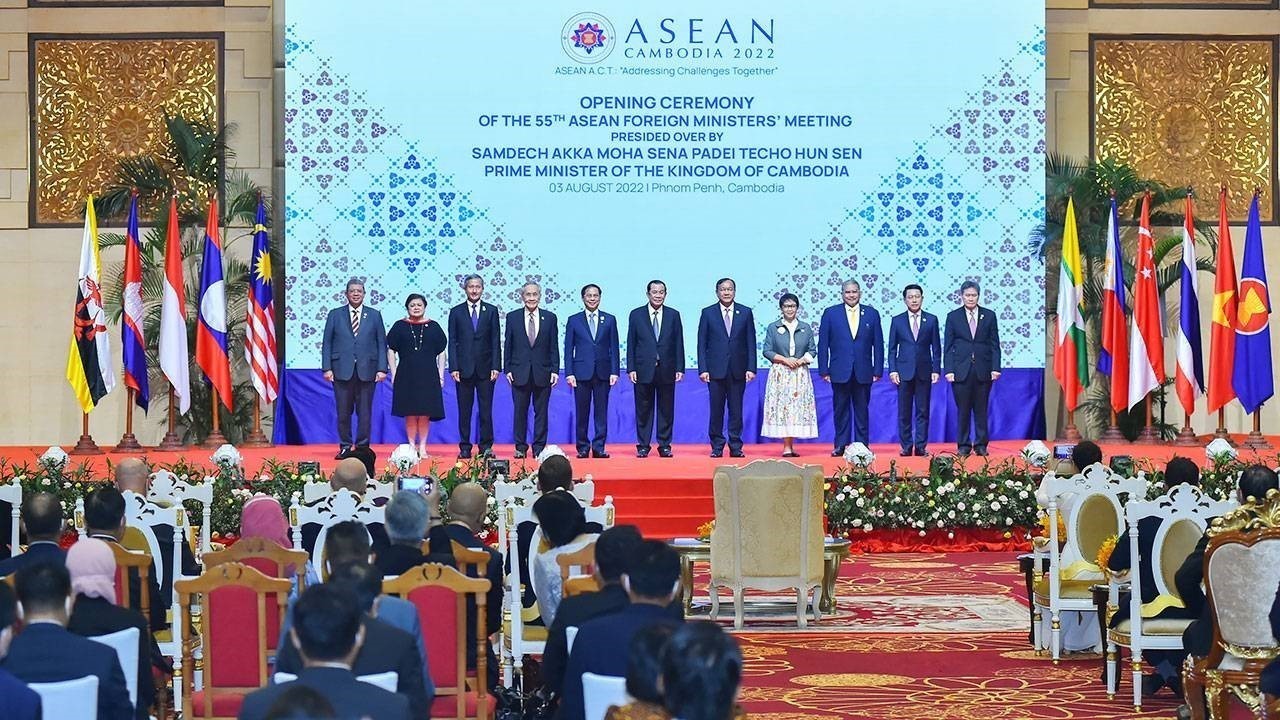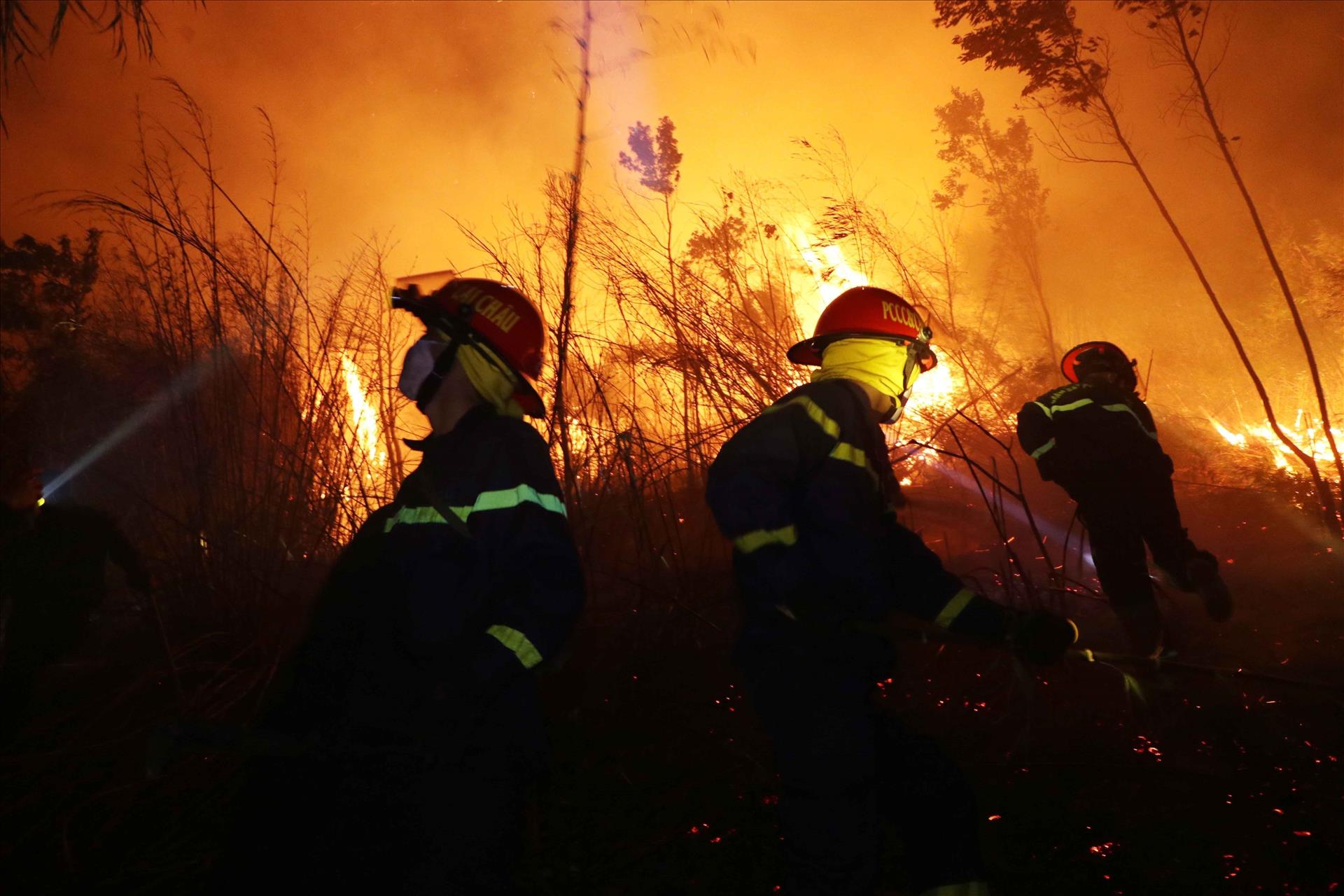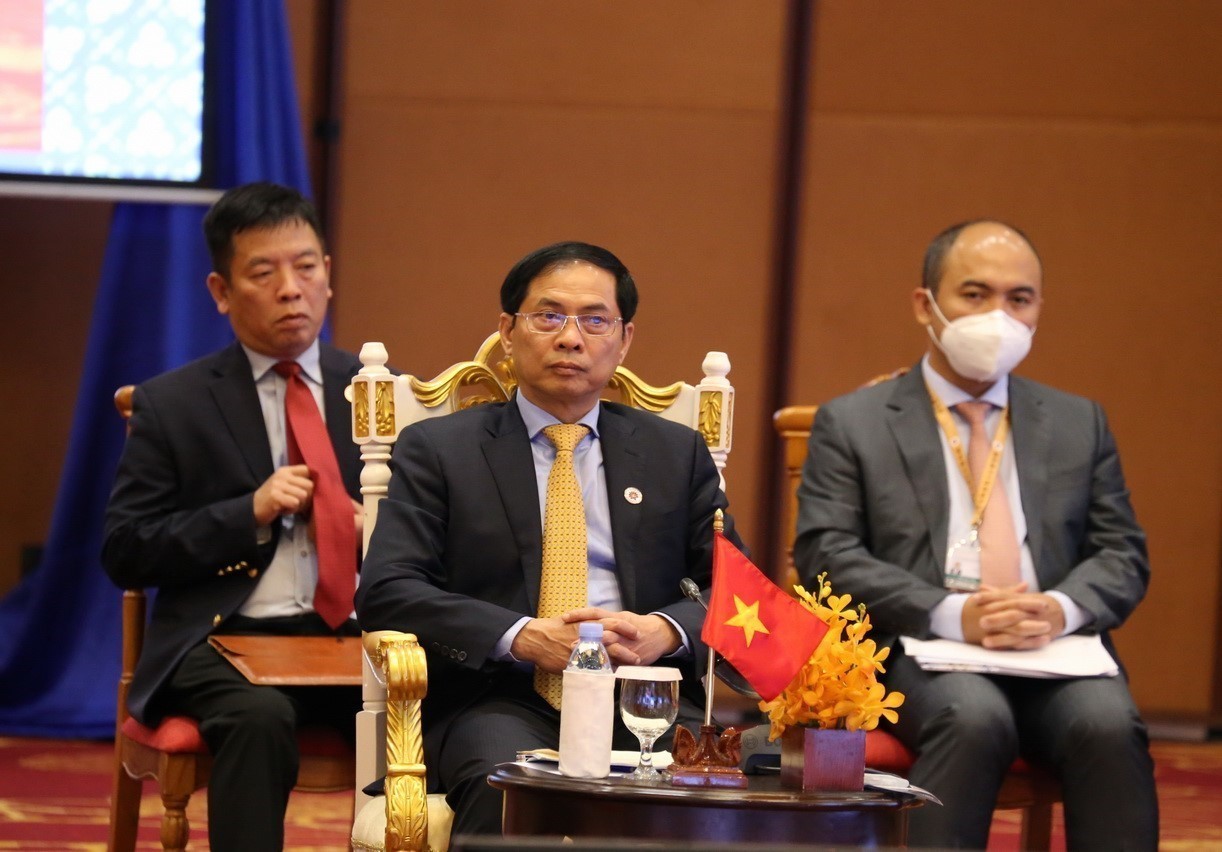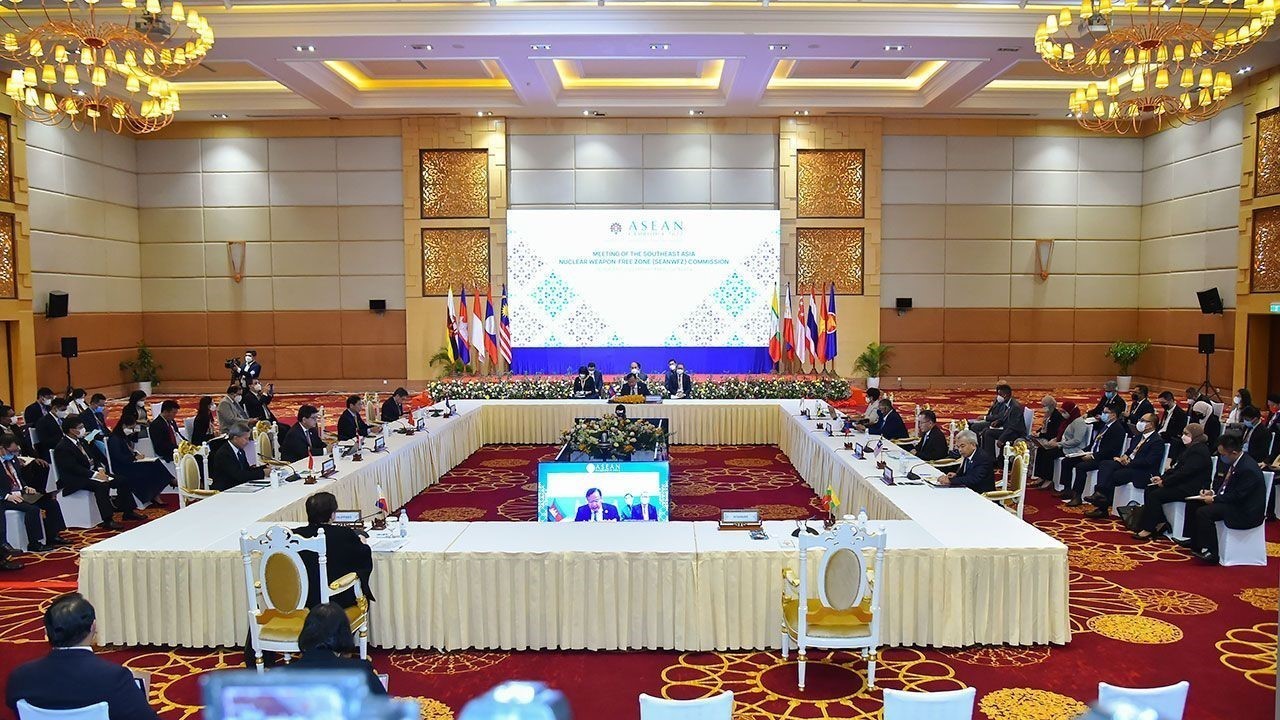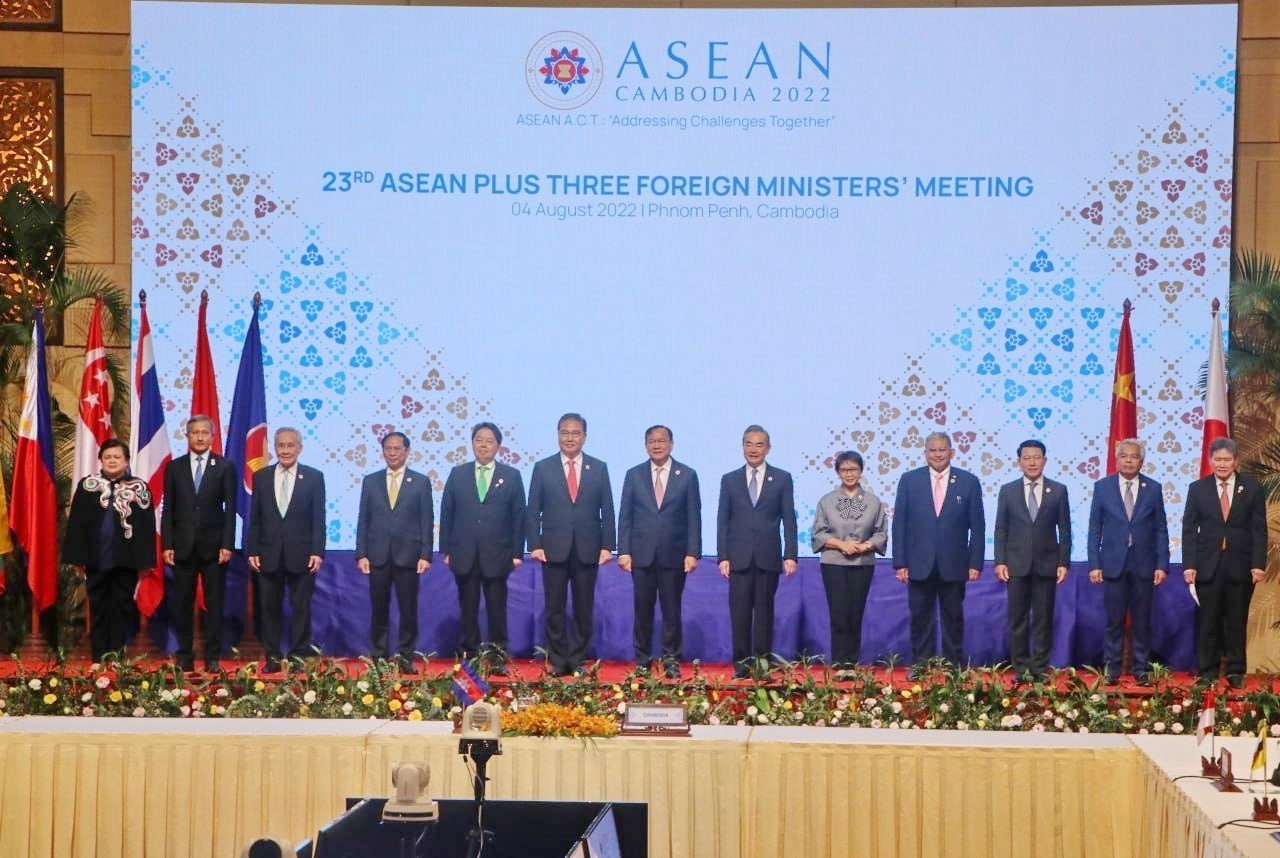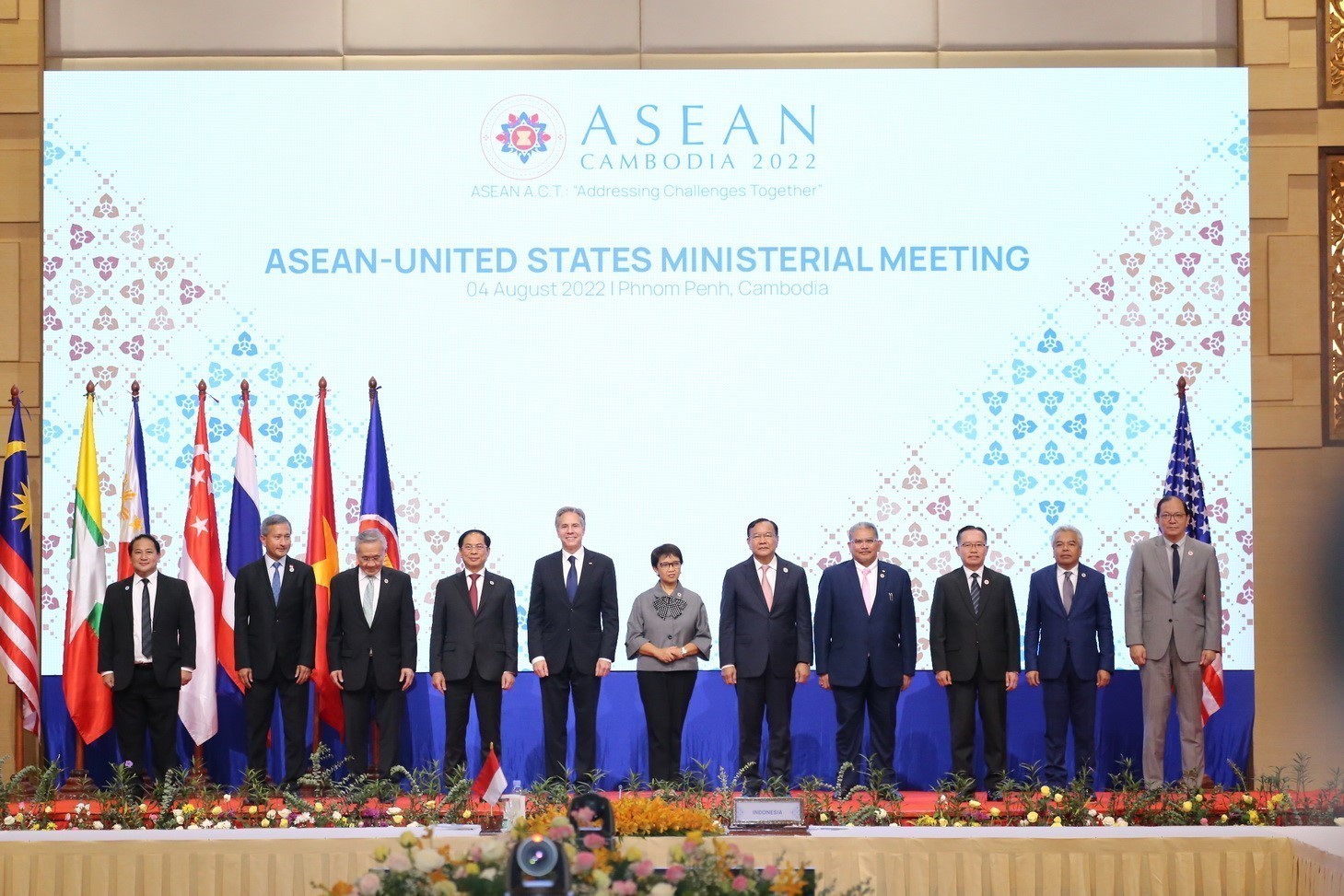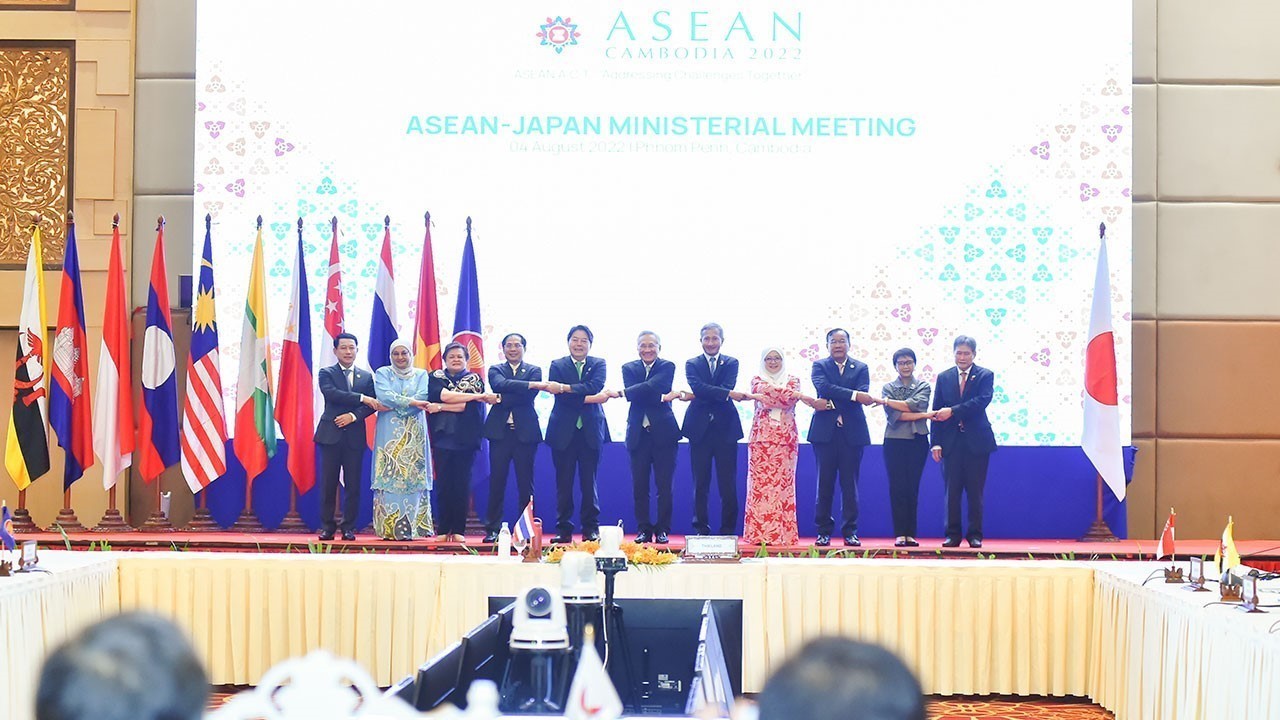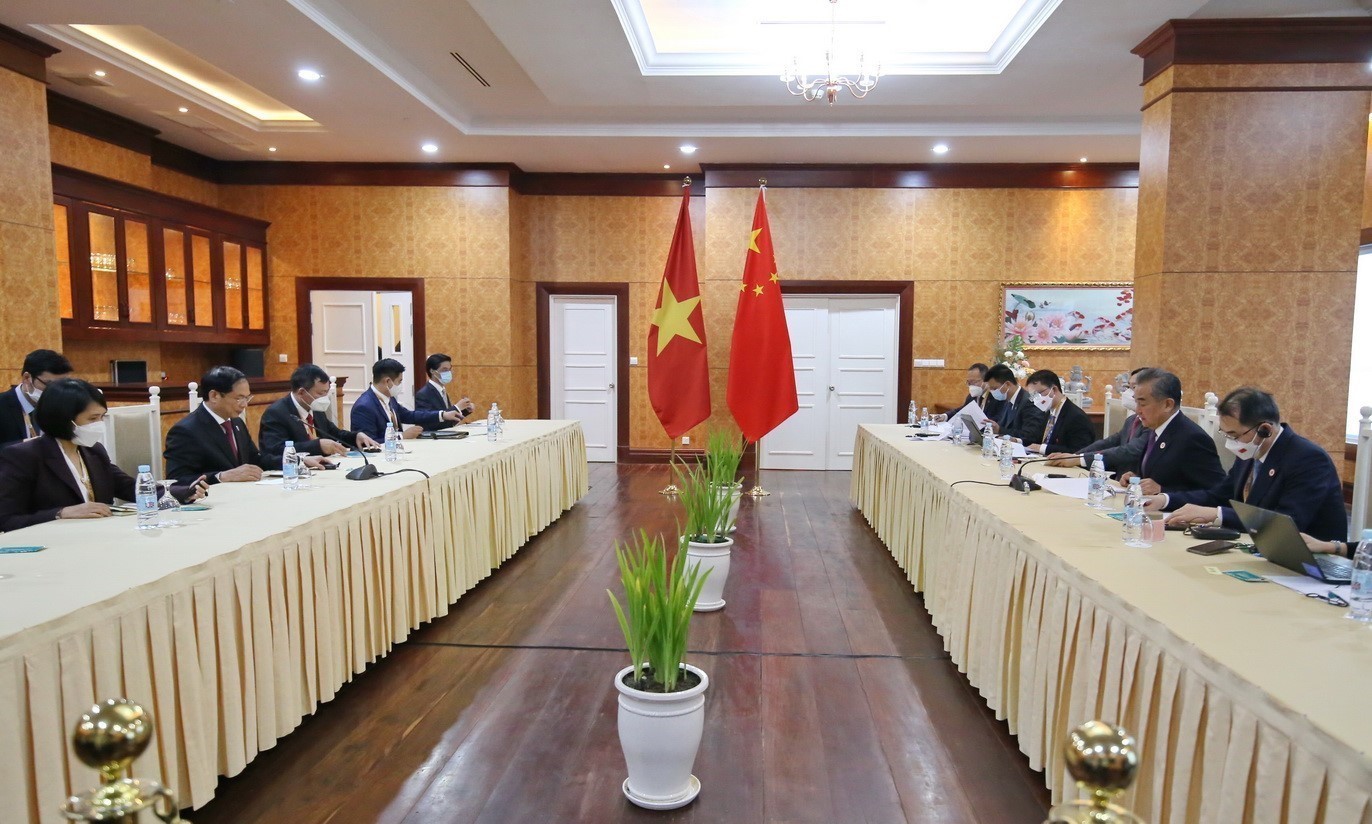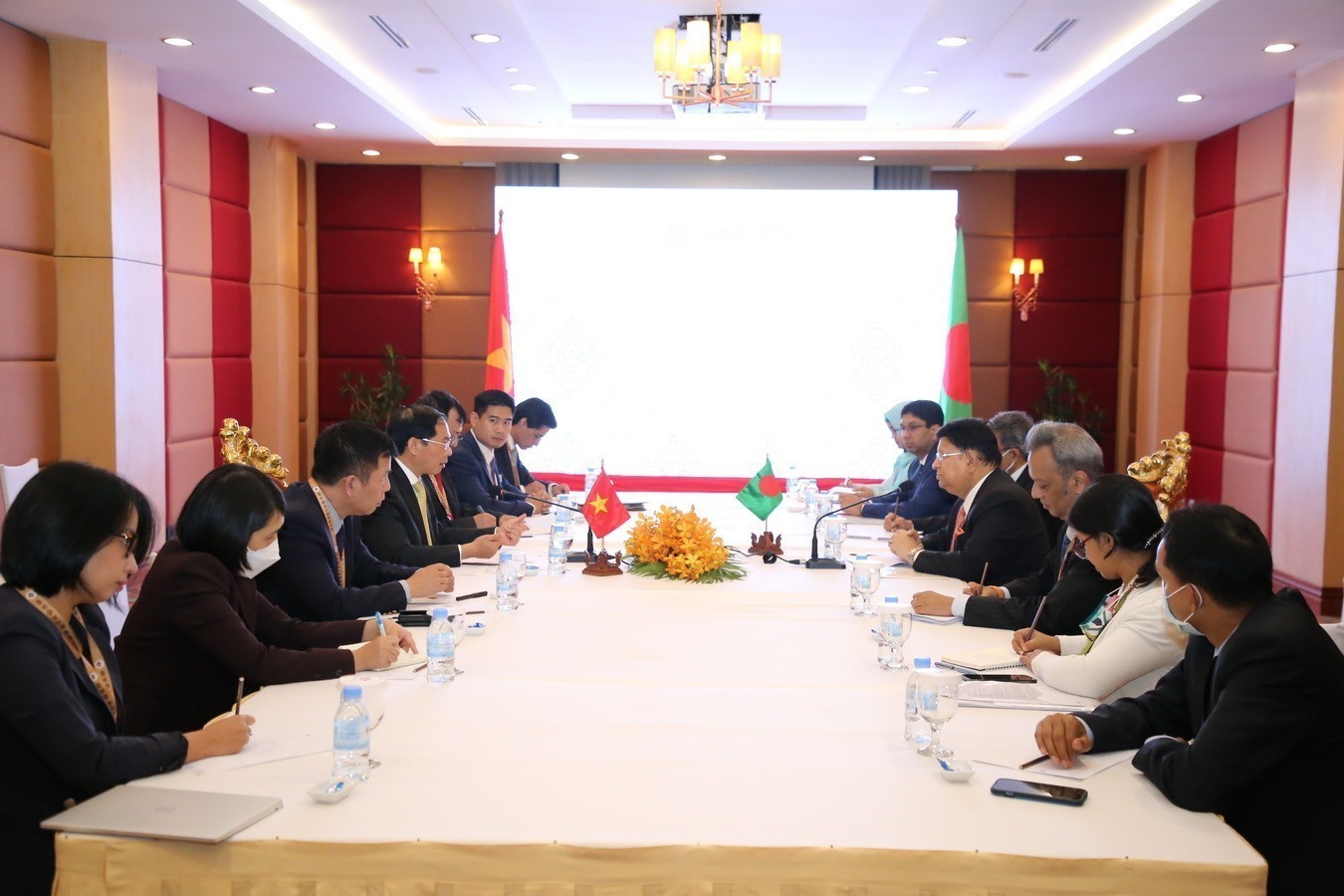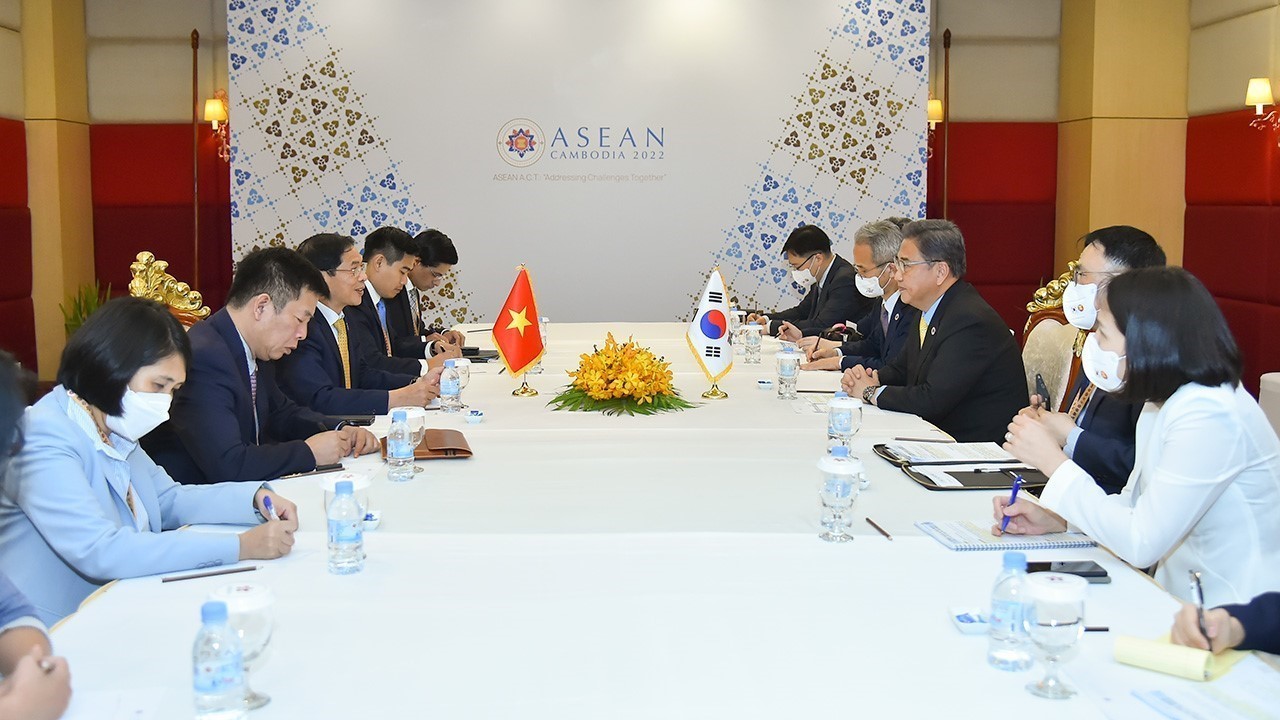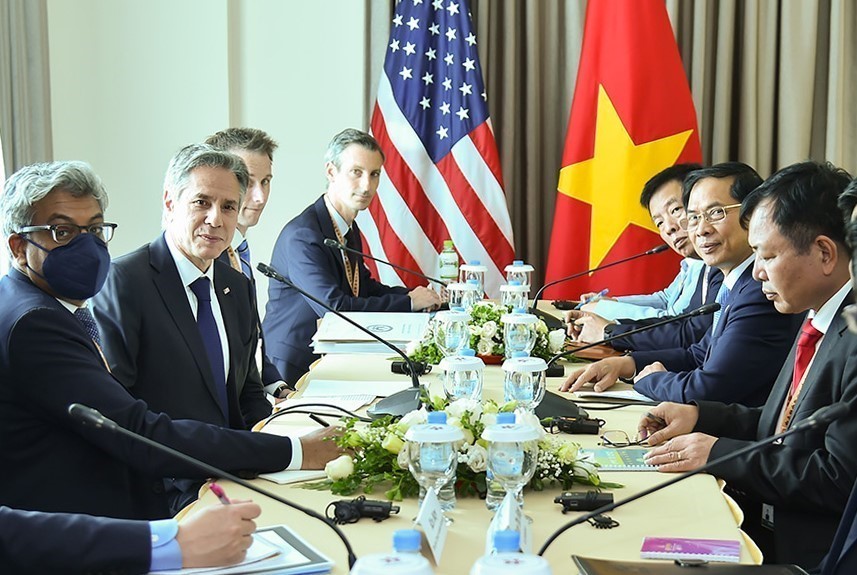ASEAN Nations Respond to Challenge Together
With the spirit of “ASEAN A.C.T.: Addressing Challenges Together”, ASEAN member countries have committed to implement the plan to build the ASEAN Community’s post 2025 vision. The 55th ASEAN Foreign Ministers' Meeting (AMM-55) and related meetings took place in Phnom Penh, Cambodia, in August with more than 20 activities within the frameworks of ASEAN, ASEAN+1, ASEAN+3, the East Asia Summit and the ASEAN Regional Forum.
At the meetings, the countries discussed connectivity, narrowing the development gap, maritime cooperation, climate change response, food security, and energy. Along with efforts for recovery from the COVID-19 crisis, the ministers emphasized the need to cooperate in vaccine research and production, and strengthen health systems in countries in the region. The member states agreed that ASEAN should acknowledge its responsibilities, maintain solidarity, act in unity and react flexibly in all situations.
Regarding maintaining ASEAN solidarity and balance, Vietnamese Foreign Minister Bui Thanh Son said that the countries should preserve the common stance on the East Sea issue and continue to make efforts to quickly achieve an effective, efficient Code of Conduct in the East Sea (COC) in accordance with international law, including UNCLOS 1982. He also reaffirmed the consistent stance of Vietnam in regional and international issues such as Myanmar, Ukraine and other ongoing disputes.
ASEAN Foreign Ministers also issued a statement on developments in the Taiwan Strait, expressing their concerns about the risk of instability and severe and unpredictable consequences for the region. The statement called for restraint and adherence to the principles of the UN Charter and the TAC. The ASEAN countries reaffirmed their support for the One China Policy. They also heightened the importance of cooperation, peaceful coexistence and healthy competition for peace, security, stability and inclusive and sustainable development.
Regarding the recent developments in the region, Vietnamese Foreign Minister Bui Thanh Son reiterated the stances of ASEAN and Vietnam, calling on all parties to exercise restraint, avoid complicating the situation, and resolve differences and disputes by peaceful means in compliance with international law, the UN Charter and the Treaty of Amity and Cooperation in Southeast Asia (TAC).
The Vietnamese Foreign Minister said that ASEAN will maintain its engagement with Myanmar, promote the implementation of the Five-Point Consensus reached by the ASEAN Leaders for the benefit of the people of Myanmar and for peace, stability and development in the region.
On the occasion, the ASEAN Foreign Ministers witnessed the signing ceremony of the Treaty of Amity and Cooperation in Southeast Asia (TAC) extension document for Denmark, Greece, the Netherlands, Oman, the United Arab Emirates (UAE), and Qatar.
*At a meeting of the Southeast Asia Nuclear Weapon-Free Zone (SEANWFZ) Treaty Commission, the participating countries committed to accelerating the implementation of the treaty, acknowledged achievements in the implementation of the Plan of Action (POA) to strengthen the implementation of the SEANWFZ, and agreed to extend the plan for the 2022-2026 period. The nations also agreed to strengthen consultations and urge the countries that have nuclear weapons to sign the SEANWFZ protocol.
*At a dialogue between ASEAN FMs and representatives of the ASEAN Intergovernmental Commission on Human Rights (AICHR), ministers spoke highly of AICHR’s efforts in implementing the action plan during the 2021-2025 period. They encouraged the commission to continue with dialogues and the integration of human rights into the community’s pillars, especially targeting vulnerable groups such as women, children, people with disabilities and migrant workers.
